|
To A r a b i a
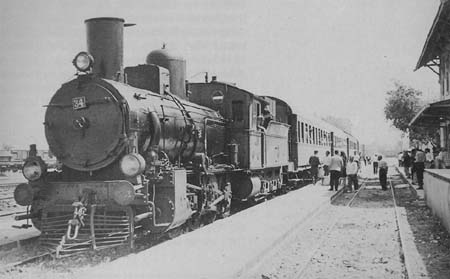
Taurus-Express Istanbul - Beirut, Lebanese locomotive 34, Tripoli 1965 (Dr. Fritz Stoeckl)
|
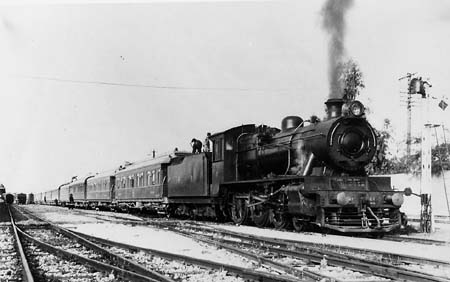
"Cairo Express" Kantara - Haifa, Palestine Railways class P and 2 CIWL sleepers, Lod 1936 (L. Gjebina, coll. Paul Cotterell)
|
Taurus-Express
Beirut section, 1965 (according to Dr. Fritz Stoeckl):
| 2 coaches | ------- | Alep - Beirut |
| 1 WL (sleeper, type SGT) | CIWL | Istanbul - Beirut |
| 1 van (4-wheeler) | ------- | Alep - Beirut |
Traction: Steam no.34 (0-8-0), from 1960 also diesel (6-wheeler, GM) by Chemins de fer de l'Etat Libanais (CEL) Tripoli - Beirut. Alep - Tripoli probably a 0-8-0 or
2-8-0 by Chemins de fer Syriens (CFS). 1949-56 a diesel railcar (de Dietrich) and 1972-74 a diesel railcar (SGP) of CFS were the only connections Alep - Beirut. With the civil war international services disappeared and now Lebanon has no trains.
CFS Standard gauge trains Alep - Latakia did run from 1973 and Alep - Damascus from 1983, with diesel locomotives from GE, USSR (type TE114), CKD and France. New cars came from East Germany, around 1980 1st class couchettes, 2nd class and dining cars, also for a train Alep - Baghdad, then sleeping cars, 1st class reclining seats and diners.
Colors: Diesels red, cars red/cream, sleepers blue/cream.
In 2001 the Taurus-Express got a sleeper Istanbul - Damascus, a blue/cream Syrian car from East German production. At Karkamis it became attached to a freight train, hauled by a Syrian Russian-built TE114 type diesel. Thomas Cook Overseas Timetable 2008 doubted if the Alep – Damascus portian actually operated.
In 2005 a modern white Turkish all-sleeper special undertook the first trip Istanbul - Palmyra (!) - Damascus. It resembled the train which had appeared in Prague six years before (see chapter Orient-Express).
Dreams and Reality
Military train Haifa - Beirut
HBT line, 1944 (according to C.W. Atkin):
| 5 | boxcars (with seats) | WD | Haifa - Beirut |
| 2 | coaches | ESR | Cairo - Beirut |
| 1 | van | ESR | Cairo - Beirut |
A photo from December 23, 1945 shows a ROD type WD locomotive, a PR type van, an USA/TC wagon, an Indian WD coach, an ESR coach and four other light-grey coaches. WD locomotives khaki-colored.
"Cairo Express"
Kantara East - Haifa, arrival Haifa in 1938 (according to Hans Kohut):
| 3 coaches | PR |
| 1 WR (diner) | CIWL |
| 1 coach | PR |
| 1 WL (sleeper) | CIWL |
| 2 coaches | PR |
| 1 van | PR |
| 1 postal van | PR |
All cars varnished teak. In 1942 extended to Cairo via the new strategic swing span bridge crossing the Suez Canal at El Ferdan, 12 to 14 white ESR (Egypt) cars, occasionally some PR cars Haifa - Kantara, WL and WR interrupted.
Traction: P (4-6-0), before 1935 H (4-6-0). From 1942 extension to Cairo with "Middle East" class (2-8-2) of USA/TC, for Kantara - Cairo nos 1087 and 1174, from 1945 "8F" nos 850 and 875 (2-8-0) and 560 (2-6-0) of WD, painted label THE ORIENT EXPRESS.
A Taurus-Express Istanbul - Cairo remained a dream. The train Haifa - Cairo was stopped in 1947, when the bridge was destroyed by a colliding ship. In 1948 Israel was founded and Israel railways started services. Trains Haifa - Tel Aviv were introduced not before in 1954. After the war of 1967 railways on the Sinai Peninsula were abenadoned, but a new swing span railway bridge at El Ferdan was erected in 2001.
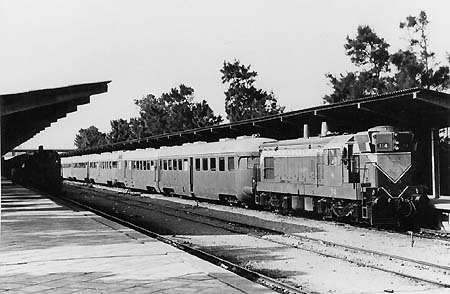
Train Tel Aviv - Haifa of Israel Railways, a G12 hauling Esslingen diesel railcars, at Tel Aviv Merkaz in 1974 (WS)
|
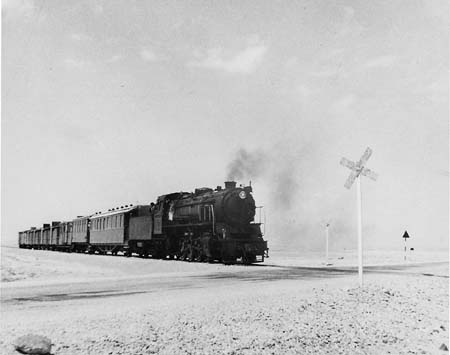
Mixed train on the Hedjaz railway, HJR series 51-53, in the Jordan desert 1961 (Dr. Hans Bock)
|
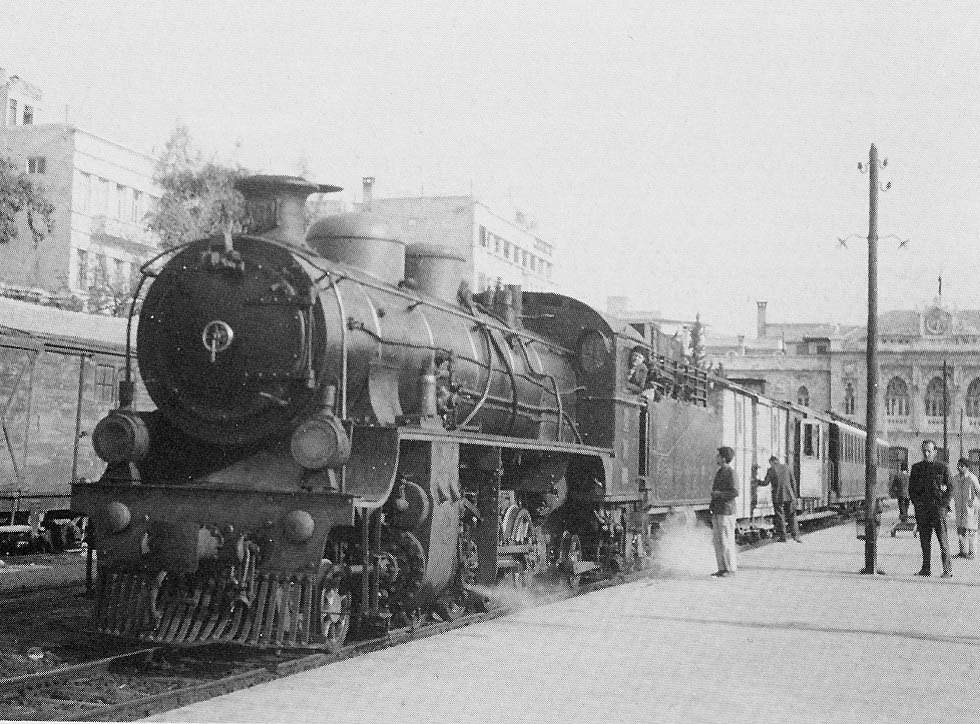
International Train Damascus - Amman with Syrian series 254-265, Damascus 1965 (Rutgers van Rozenburg)
|
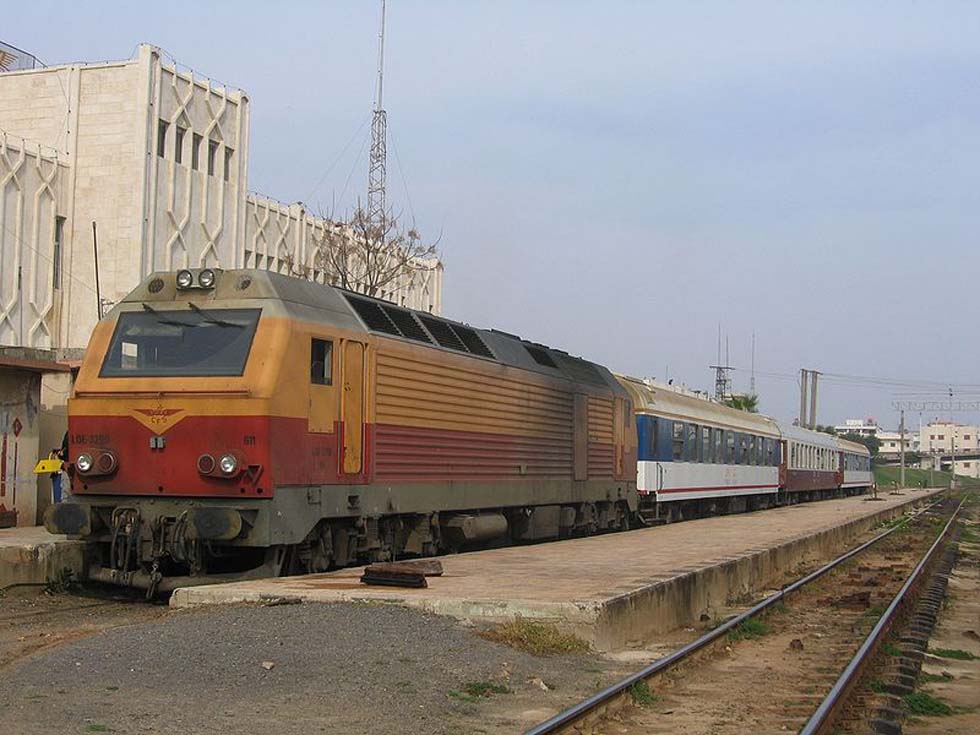
DE32AC of CFS on the line connecting the Syrian harbor Al Ladhiqiyah, at Tartus in 2007 (Reinhard Dietrich, via Wikimedia)
|
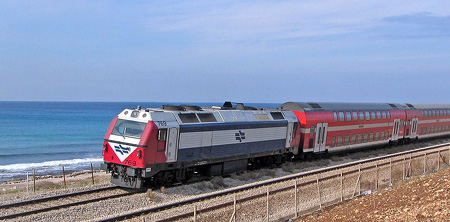 Alstom diesel 769 of Israel Railways near Haifa (Alexander Lysyi, via Wikimedia)
Alstom diesel 769 of Israel Railways near Haifa (Alexander Lysyi, via Wikimedia)
|
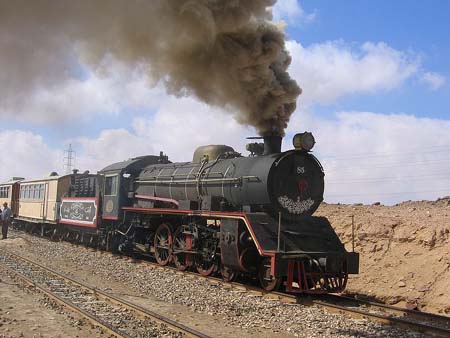
JHR spezial Wadi Rum – Aqaba, at Faraifa on the Hedjaz railway in 2007 (source: Selbst fotografiert, via Wikimedia)
|
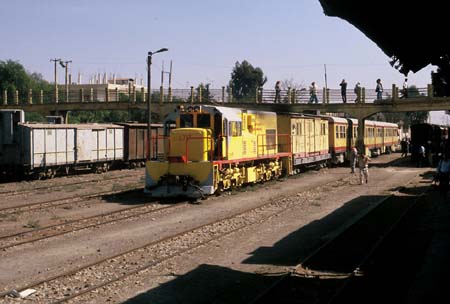
International Train Amman - Damascus, General Electric of HJR no.40.213 and Ganz-Mavag trailers, at Dera, Oct.1999 (Johannes Gloeckner)
|
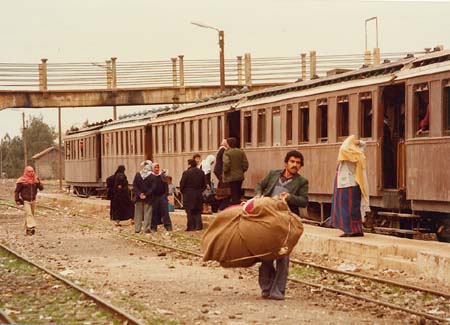
International Train for Amman, German cars from the first Hedjaz railway, at Dera, December 1981 (Waldemar Gruebl)
|
International Train
The 1.05m gauge Hedjaz Railway, built with the help of the German empire, started in 1894 in Damascus and reached Madinah in 1908. After 1924 it was in service between Damascus and Ma'an. Its successors CFH and HJR Later did run the International Train Damascus - Amman. During the '60s it was a passenger train, consisting of 4 wooden cars, a heritage from German empire's Hedschasbahn, steam locomotive series 254 - 265 (2-8-2) of CFH Damascus - Dera and new Pacific series 82 - 85 from Japan by HJR Deraa - Amman. Later it became a mixed train. From 1976 GE diesels were used on HJR, from 1981 Russian diesels A-300 on CFH. For some time ran a direct passenger train Damascus - Amman with yellow Mavag railcar trailers, diesel locomotive-hauled, but most time there was only a mixed train Damascus - Deraa with a van and 4 wooden cars from the old Hedschasbahn, connecting with a similar mixed to Amman. In 2005 Syria published the start of building a modern standard gauge line Damascus - Deraa, intended to become the new link with Jordan and Arabia. And Jordan surprisingly announced tourist trains on the 1.05 m gauge freight line Amman - Aqaba. In 2008 it was doubted if Deraa – Amman operated.
Colors on 1.05m gauge: CFH diesels and railcars green/yellow, HJR diesels orange/black, wooden cars varnished.
Desert Bus
During the colonial age, England was opposed to a completion of the Bagdadbahn and promoted the idea of a "Trans Arabian Railway" to Mesopotamia. It should start at Haifa and Palestine Railways got in 1930 an order for planning it, classified "urgent and secret", as railway historian Paul Cotterell confirmed. King Feisal prefered the Bagdadbahn and in 1933 he died under mysterious circumstances after a visit to London. The "Trans Arabian Railway" however was not built and, instead of trains, buses crossed the desert on the way to Baghdad. The trailer-type buses of the Nairn Transport Company offered even some sleeping-car service. Iran could be reached from 1932 by a bus service Khanakin - Tehran. Now these traditional routes have disappeared from Cook's Overseas Timetable, but astonishing long-distance bus lines continue to cross the desert.
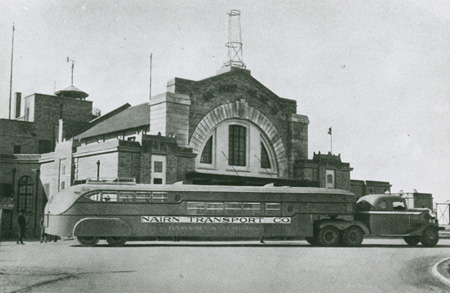
Bus Baghdad - Damascus of Nairn Transport Co. at Baghdad Airport (publication of 1940)
|
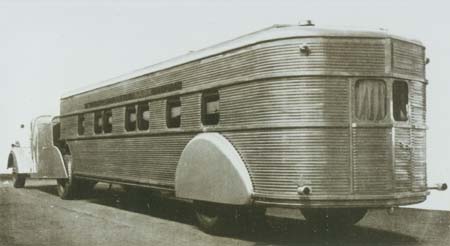
Budd type bus with 14 sleeping-berths of Nairn for Damascus - Baghdad, around 1937 (coll. WS)
|

|
Bus Damascus - Beirut, of U.S. production, in the 1950s (Der Bus, coll. WS)
|
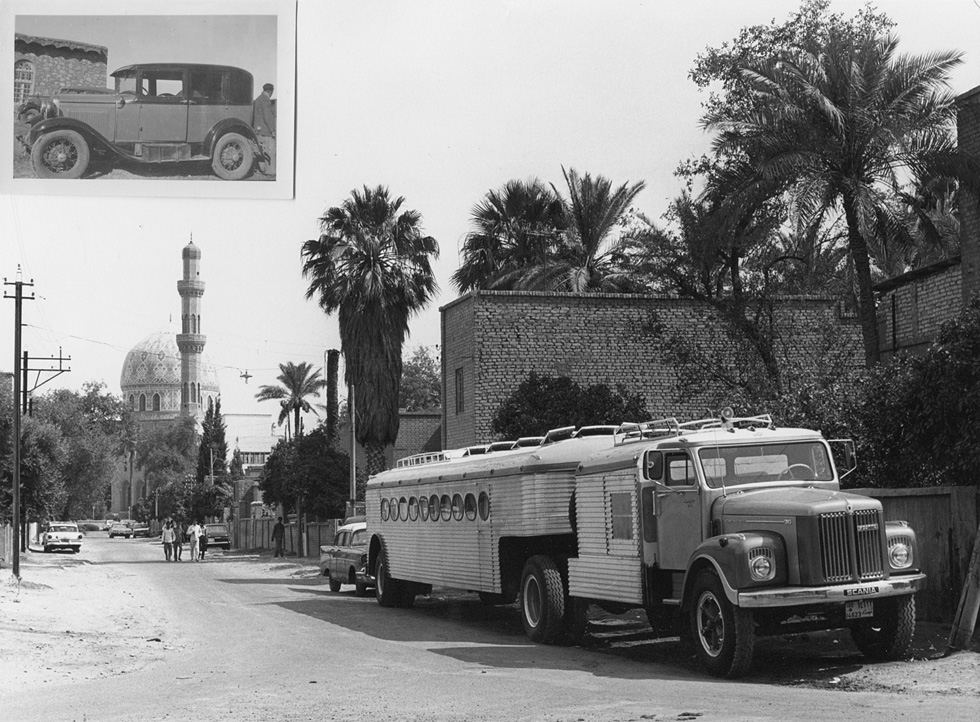
Scania desert bus of Azzawi Transport Co. at Baghdad in 1972 (WS) and a Ford motorcar of the pre-war Tel Ziouane - Kirkuk service, at Tel Ziouane railway station (coll. Roger Commault)
Aden
When Aden in Yemen had been an important British base on the way to India, there was a short line there, obviously meter gauge, in service only between 1916 and 1929, and widely unknown.
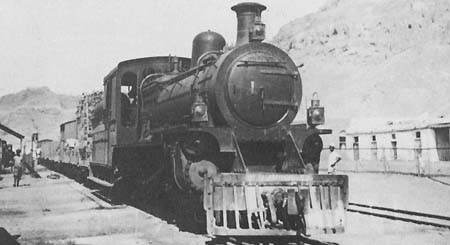
Aden Railway, tenwheeler no.1 (Robert Mumford)
|
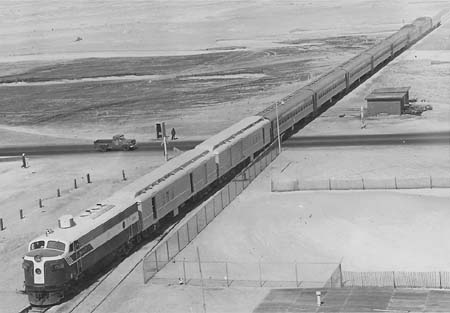
Saudi Arabia, General Motors no.1508, American cars and in the rear two Budd diesel railcars, near Abqaiq in the 50's (Saudi Government Railroad Organization)
|
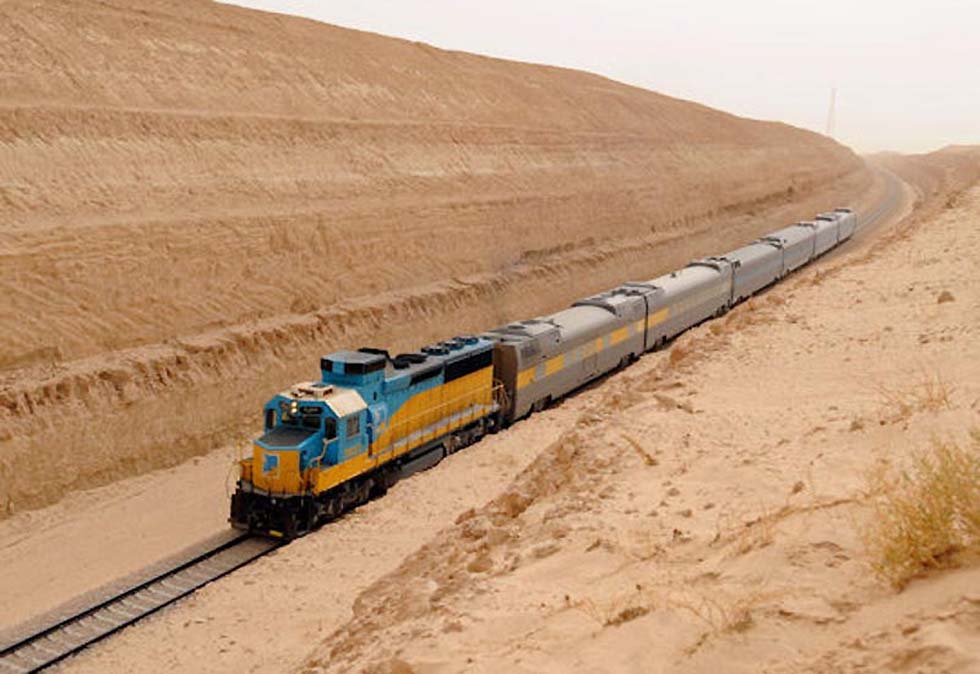
Saudi Arabia, Dammam – Riyad line, 2009 (Lijoriyo, via Wikimedia)
Riyadh - Dammam
The railway Riyadh - Dammam of the Saudi Government Railroad Organization was completed in 1951. It had been the dream of Ibn Saud, impressed by the American streamliners. American cars and Alco as well as GM G18 diesels were delivered, but services Riyad - Dammam were by Budd railcars. In 1979 Schindler (Switzerland) built two new train sets:
| 1 | Generator van |
| 1 | Dining car |
| 2 | 1st class (reclining chairs) |
| 4 | 2nd class |
Traction: Diesel (CoCo) class 3500 (GM SDL) and 3600 (Francorail).
Colors: Diesels turquoise/silver, green/white, cars stainless.
Later new diesels, new cars from Germany and France and in 2003 new train sets were ordered.
Future
Always there have been great projects on the Arabian peninsula. A sensation in 2006 was the publication of studies for a "Transrapid" maglev airport link in Qatar.
In the 21st century Dubai started planning a modern airport link and a Gulf rail network became studied in the United Arab Emirates. In 2009 the press (e.g. SZ, Nov.21) described the project of Qatar Railways to connect Doha with Bahrain under participation of German railways DB. In the same year the Etihad Trains Company was founded, intending to build a network connecting the cities and airports of the United Arab Emirates. The idea of connecting Matrah (Muscat) with Kuwait was published and then the project of a connection with Saudi Arabia via Ghweifat was announced. In 2010 the project of an electrified inter-city line Matrah – Suhar in Oman was published.
The Saudi Railways Organization (SRO) focused on the existing Dammam – Riyad line, doubling the section Al Hufuf – Ar Riyad for running CAF train sets at 200km/h.
The Hamarain High Speed Rail project Makkah – Jiddah – Madinah was published in 2009 for contruction work to be started in 2012 and an intended speed of 320km/h. A link between Riyadh and Amman could be built, intended for modern logistics, but passenger services were not ruled out. Even the possibility of an extension to Turkey was mentioned by Newsweek (Feb.27, 2006), quoting Saudi Prince Mohammad K.A. Al Feisal: "Regionality is opening up". In 2011 Saudi King Abdullah chose the Spanish consortium “Al Shoula“, with an 18% participation by Talgo, for building the 450km high-speed line Madinah – Jiddah airport – Makkah. The Talgo trains are laid out for 300km/h, to be delivered in 2014. The Jiddah station is designed by famous Norman Foster and partners.
In the meantime the Saudi Railway Co. got the first train sets from CAF for 200km/h, announced for services from Riyad to Al-Qurayyat close to Jordan (according to Railway Gazette Intl, June 2015). The Gulf Corporation Council made proposals even for a rail link from Kuwait to Oman and to Saudi Arabia. For 2018 opening of the service Makkah – Jeddah – Madinah was announced.
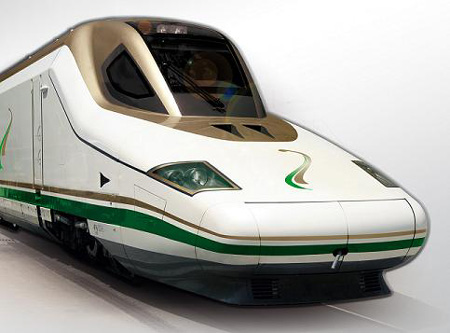
|
Talgo for Makkah - Al Madinah, publication 2011 (courtesy Talgo)
|
We have deleted this picture
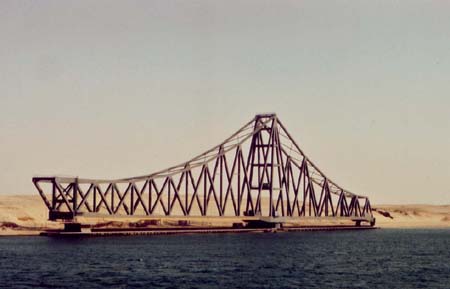
The new Suez Canal railway bridge near El Ferdan (WS)
|
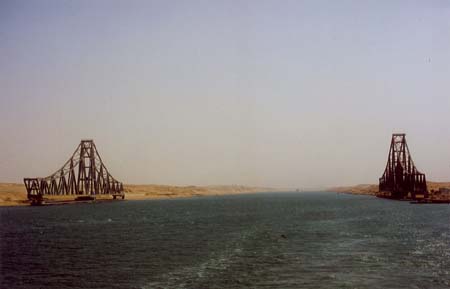
The new Suez Canal railway bridge near El Ferdan (WS)
|
Literature:
See also Dr. Juergen Franzke: Bagdad- und Hedjazbahn (DB-Museum)
|








 Alstom diesel 769 of Israel Railways near Haifa (Alexander Lysyi, via Wikimedia)
Alstom diesel 769 of Israel Railways near Haifa (Alexander Lysyi, via Wikimedia)













